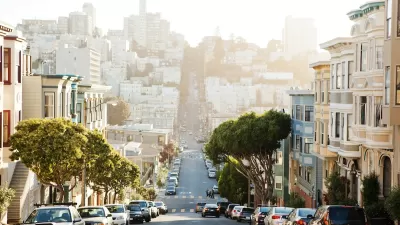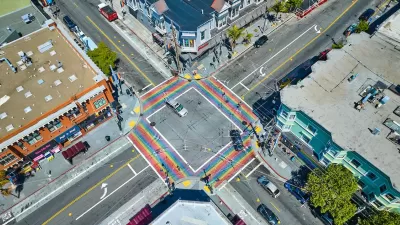Elsa Brenner looks at the boon for developers, and residents, that a city-and-state-funded effort to daylight the Saw Mill River has provided for the New York City suburb of Yonkers.
Cities around the country have found creative means to stay buoyant during the Great Recession - from single-minded developer led initiatives to diversifying their economies by attracting medical and university facilities. For the city of Yonkers, focusing on reinvigorating the city's long-hidden natural resource has proven to be a successful approach.
While development in the decade before the recession brought new construction, adaptive reuse, and public amenities to the city's Hudson River waterfront, with the daylighting of the Saw Mill River, the city's redevelopment efforts are being shifted downtown. Developers are now flocking to "A two-block section of the Saw Mill, a tributary of the Hudson River
buried under concrete for nearly a century, [that] has now been uncovered and
surrounded by benches in a parklike setting," writes Brenner. "When the next two phases of
the $48 million daylighting project are completed in about three years,
the river will meander through a six-block-long section of downtown
Yonkers for all to behold."
"At Scenic Hudson, a Poughkeepsie
environmental group that worked with Yonkers to undertake the
daylighting project, Ned Sullivan, its president, described the Saw Mill
River, which had become polluted before it was covered over, as 'no
longer a resource people want to hide.'"
"Not only is it a catalyst for revitalization of the downtown," he said,
"but now it will become the centerpiece of the city."
FULL STORY: Restored River a Boon to Yonkers

Planetizen Federal Action Tracker
A weekly monitor of how Trump’s orders and actions are impacting planners and planning in America.

Restaurant Patios Were a Pandemic Win — Why Were They so Hard to Keep?
Social distancing requirements and changes in travel patterns prompted cities to pilot new uses for street and sidewalk space. Then it got complicated.

Map: Where Senate Republicans Want to Sell Your Public Lands
For public land advocates, the Senate Republicans’ proposal to sell millions of acres of public land in the West is “the biggest fight of their careers.”

Maui's Vacation Rental Debate Turns Ugly
Verbal attacks, misinformation campaigns and fistfights plague a high-stakes debate to convert thousands of vacation rentals into long-term housing.

San Francisco Suspends Traffic Calming Amidst Record Deaths
Citing “a challenging fiscal landscape,” the city will cease the program on the heels of 42 traffic deaths, including 24 pedestrians.

California Homeless Arrests, Citations Spike After Ruling
An investigation reveals that anti-homeless actions increased up to 500% after Grants Pass v. Johnson — even in cities claiming no policy change.
Urban Design for Planners 1: Software Tools
This six-course series explores essential urban design concepts using open source software and equips planners with the tools they need to participate fully in the urban design process.
Planning for Universal Design
Learn the tools for implementing Universal Design in planning regulations.
Heyer Gruel & Associates PA
JM Goldson LLC
Custer County Colorado
City of Camden Redevelopment Agency
City of Astoria
Transportation Research & Education Center (TREC) at Portland State University
Camden Redevelopment Agency
City of Claremont
Municipality of Princeton (NJ)





























